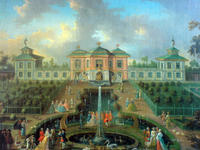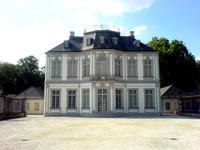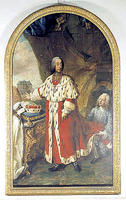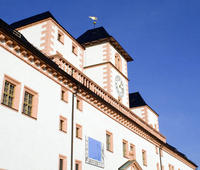You are in: Europe -> Germany -> Castles of Augustusb... , and traditional search or Image Gallery will yield results of this site only
Castles of Augustusburg and Falkenlust at Brühl
| Site number: | 288 |
|
| Type of site: | Cultural | |
| Date: | 18th-century | |
| Date of Inscription: | 1984 | |
| Location: | Europe, Germany, State of North Rhine-Westphalia (Nordrhein-Westfalen) | |
| Video: |
|
Up to 75 images are shown here. Click on each for more details or on Image Gallery for more images.
| Description: | Located in an tranquil garden landscape are the earliest examples of Rococo architecture in 18th-century Germany: Augustusburg Castle, a lavish residence of Cologne prince-archbishops, and the Falkenlust hunting lodge, a miniature rural folly. --WHMNet paraphrase from the description at WHC Site, where additional information is available. | |
| The Augustusburg and Falkenlust palaces in Brühl, North Rhine-Westphalia, Germany have been listed as a UNESCO cultural World Heritage Site since 1984. They are connected by the spacious gardens and trees of the Schlosspark. The palaces were built at the beginning of the 18th century by the arch-bishop of Cologne, Klemens August of Bavaria (1700-1761) of the Wittelsbach family. The architects were Johann Conrad Schlaun and François de Cuvilliés. The magnificent staircase in Augustusburg Palace was designed by Johann Balthasar Neumann. he gardens were designed by Dominique Girard. An elaborate flower garden for an area south of the palaces was also designed, but it was restructured by Peter Joseph Lenné in the 1800s and turned into a landscape garden. Attempts to renovate the area have proven difficult, due to poor source material availability. Falkenlust was built from 1729 to 1740, in the style of the Amalienburg hunting lodge in the park of Nymphenburg Palace by François de Cuvilliés. Until 1994, Augustusburg has been used as a reception hall for guests of state by the German President. --Wikipedia. Text is available under the Creative Commons Attribution-ShareAlike License. | ||
| Source: | http://whc.unesco.org/en/list/288 | |
| Source2: | http://whc.unesco.org/en/list/288/video | |
| Reference: | 1. UNESCO World Heritage Center, Site Page. | |


 NHK World Heritage 100 series
NHK World Heritage 100 series














